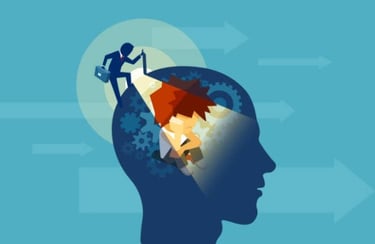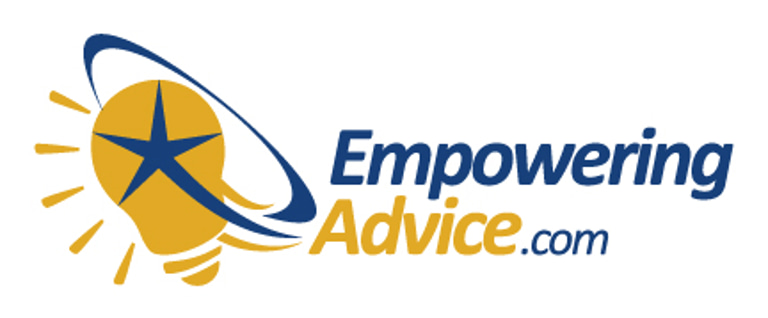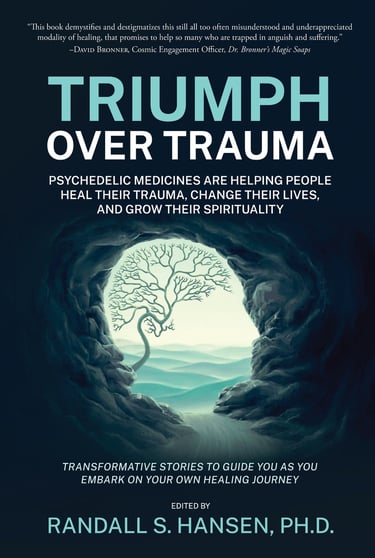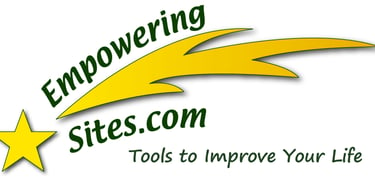To Truly Heal, We Must Reconnect With Our Inner Child
"Trauma is a fact of life. It does not, however, have to be a life sentence."--Peter A. Levine, PhD
"Hold the hand of the child that lives in your soul. For this child, nothing is impossible."--Paulo Coelho
How's your inner child? When was the last time you connected with your younger self? Do you even allow yourself to connect with your inner child? Does your inner child get triggered into action at times?
Almost all of us have suffered trauma, especially in our childhood. That trauma can range from abandonment and lack of need fulfillment to abuse -- all with the same results. Anything that causes hurt, pain, rejection, shame is childhood trauma that needs to be understood (as an adult) and cleared.
Trauma represents a profound compression of "survival" energy -- energy that has been trapped and needs to be released from the mind, body, and soul. We store/suppress past trauma -- the pains from those experiences -- deep inside ourselves.
Sadly, hiding/storing pain deeply inside us does NOT heal us; it's simply an avoidance mechanism -- until it's not.
Childhood trauma is some of the worst we face, simply because the child brain does not understand how to process all the information and emotions caused by the event(s), often resulting in the child having to quickly "grow up." Trauma-influenced children often grow up to be adults who are disconnected from their true inner child, with that unresolved child-wound festering beneath the surface.
The inner child is the part of our childhood psyche that continues to influence how we react as adults. Everyone has an inner child, though not all have experienced trauma.
Do you need to heal your inner child? Let's look at some symptoms that result from childhood trauma.
Symptoms of Unresolved Childhood Trauma
Overly impulsive/reactive
Temper tantrums
Sulking
Attracting abusive/controlling partners
Overactive insecurity
Abandonment issues
Feelings of shame
Hiding emotions
Fear of rejection
Self-sabotaging behaviors (relationships, career)
Substance abuse
Promiscuous/unsafe behaviors
Depression/anxiety
Extreme independence
Workaholism
Examples of Inner Child Reactions
We all have an inner child -- a younger version of ourselves -- that can come out in stressful situations. Some of us may have multiple inner children. Some examples:
Our seven-year-old self rears itself when the boss picks someone else to lead the new team;
Our nine-year-old self freaks out when our significant other forgets to pick us up at the airport;
Our thirteen-year-old self comes out when we walk into a room and everyone falls silent;
Our seventeen-year-old self arises when a partner asks you to take out the trash.
Benefits of Healing Your Inner Child
Negative/restricting emotions from childhood released;
Hidden/blocked childhood gifts and talents will reemerge;
Deepening connection to ourselves -- our true selves;
Acceptance of love, support, and self-love;
Uncontrolled outbursts and negative reactions dissipate;
Positive/healthy relationships see great improvement.
Inner Child Work
All of us should spend time reconnecting with our inner child -- whether we believe/know we experienced trauma or not -- because we often feel the need to "grow up (and out)" from our inner child, which results in losing a key part of ourselves.
I don't believe in living life as Peter Pan and never growing up, but I do believe we have to keep child-like elements more active in our adult lives, including wonder, play, love, adventure, innocence, silliness, and joy.
The key with inner child work is getting to the point of the happy and healed inner child. In doing the work, we do not want the person retraumatized over unexpectedly reliving the trauma.
If you know you have experienced trauma in childhood -- but have never directly faced/dealt with that trauma -- it would be best to work with a therapist or trained professional in guiding your inner child healing.
If you are doing the work on your own, you will need to create a safe space to heal. The goal is validating the experience and emotions, allowing yourself to truly love yourself, nurturing that hurt child, and truly listening and showing respect for the trauma.
Various healing modalities can be used for inner child healing, but one of the most powerful tools is the use of psychedelic medicines to cut through years of mental blockages and take the person directly to the childhood trauma; again, the key is being prepared for the psychedelic experience AND for the showcasing of the trauma that needs to be released/understood.
Another healing option is meditation and/or breathwork that allows us to alter our consciousness and peer safely into the past, helping us understand our earlier traumas and process those emotions as adults.
Somatic healing may be another useful tool for your inner child work. Simply learning to hug yourself -- your inner child -- is a wonderful first step to healing.
Another interesting tool is reparenting yourself by simply journaling/dialoguing with your inner child. Pick an age in which you have really strong positive or negative memories and have a conversation with your younger self; use a picture of yourself at the age to help get you in the correct mindset -- and know that it will seem a bit odd at first, but the more you practice, the stronger the work will become. Listen and acknowledge whatever that inner child expresses.
Final Thoughts About Inner Child Work
Three key concepts need to be discussed before wrapping up here.
First, reconnecting and healing our inner child takes work and time. Depending on the healing modalities used, you'll need to be prepared to spend time and effort understanding the trauma from childhood and integrating your healed inner child into your adult self.
Second, healing often requires forgiveness -- first to yourself for any guilt, shame, or other things you have done to yourself because of the trauma; second to the perpetrator of the trauma -- and even this forgiveness is more for YOUR healing than for the other person(s). Forgiveness is therapeutic.
Third, healing takes a village... a supportive community -- or at least a small group of supportive friends. This healing work is hard, challenging, exciting, fun, and stressful, which is why it's important to have loving, supportive people with you on your healing journey.
The greatest benefit of an inner child healing journey is having more fun, more joy, more love in life. I can categorically state that I absolutely love being silly or curious... and just being in awe at the beauty of nature... seeing things with a child-like perspective.
Your inner child is ageless, so embrace those moments when you are living alongside your childhood self.
Remember that relaxation and playfulness -- those child-like behaviors -- are essential components of good mental health.
Last Thought: ALL healing is a journey -- and there are no time limits on that journey. Take your time.
Additional Healing Inner Child Resources


Dr. Randall Hansen is an advocate, educator, mentor, ethicist, and thought-leader... helping the world heal from past trauma. He is founder and CEO of EmpoweringSites.com, a network of empowering and transformative Websites, including EmpoweringAdvice.com.
He is the author of the groundbreaking Triumph Over Trauma: Psychedelic Medicines are Helping People Heal Their Trauma, Change Their Lives, and Grow Their Spirituality and the well-received HEAL! Wholeistic Practices to Help Clear Your Trauma, Heal Yourself, and Live Your Best Life.
Dr. Hansen's focus and advocacy center around true healing ... healing that results in being able to live an authentic life filled with peace, joy, love. Learn more by visiting his personal Website, RandallSHansen.com. You can also check out Dr. Randall Hansen on LinkedIn.






